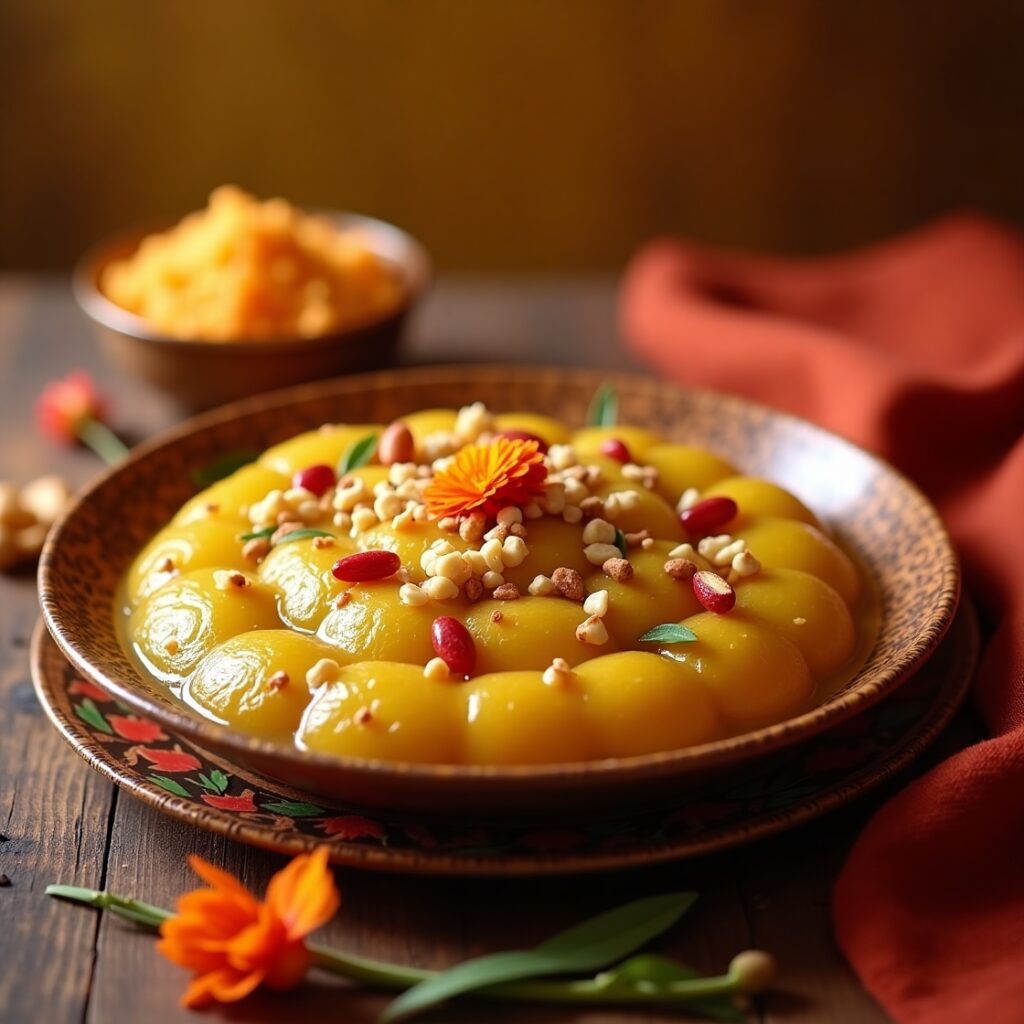Growing up in a Keralite household, Sheera was never a regular on our dining table. In fact, my only memory of this golden sweet dish was from the Sai Baba temple down the lane, where we would get it as prasad every Thursday. It was always served in a neat, firm square — simple, sweet, sacred.
For the longest time, I believed Sheera existed only in temples, blessed and untouchable in its holy form. That belief was turned completely upside down after I married into a Maharashtrian family. Suddenly, Sheera was everywhere — at breakfast, at poojas, as party dessert, and surprisingly, even as an everyday mood-fixer.
Over time, I found my own little twist with it. While the traditional prasad-style Sheera is solid and sliceable, my personal favourite is the slightly softer, gooier version served hot — something that feels like a hug in a bowl. Especially on days when I’m down, this dish is my sweet little comfort.
Sheera, I’ve realised, isn’t just a dish. It’s versatile, forgiving, and welcoming even to the most amateur cook. So if you’re ready, let’s begin the cooking…

🧂 Ingredients:
- 1 cup rava/sooji/semolina (medium-coarse)
- ¾ to 1 cup sugar (adjust as per your sweetness preference)
- 2½ cups water or milk (milk makes it richer)
- ¼ cup ghee (or more if you like it richer)
- 2 tbsp cashews
- 1 tbsp raisins
- 4–5 cardamom pods (crushed or ½ tsp cardamom powder)
- Optional: a few strands of saffron or a drop of kesar food color
- Optional: 2 tbsp chopped banana or pineapple (used in South Indian temples)
🔥 Instructions:
- Roast the Rava:
- Heat 1 tbsp ghee in a pan.
- Add rava and roast on low-medium heat till aromatic and lightly golden (about 6–8 mins). Stir constantly so it doesn’t brown unevenly.
- Set aside.
- Roast Dry Fruits:
- In the same pan, add 1 tbsp ghee.
- Fry cashews till golden, then add raisins till they puff up.
- Set aside with the dry fruits.
- Boil the Liquid:
- In a saucepan, bring water or milk to a boil.
- Add saffron strands (if using) and crushed cardamom.
- Combine:
- Lower the heat and slowly add the hot liquid to the roasted rava, stirring constantly to avoid lumps.
- The rava will absorb the liquid and thicken fast.
- Add Sugar & Ghee:
- Once the mixture thickens, add sugar. It will loosen up a bit — keep stirring.
- Add the remaining ghee gradually.
- Stir until the sheera leaves the sides of the pan and becomes soft and glossy.
- Add Dry Fruits:
- Mix in the roasted cashews and raisins.
- Serve hot or warm.
💡 Tips:
- For extra flavor, try adding a few drops of rose water or a pinch of nutmeg.
- You can make pineapple sheera or banana sheera by adding finely chopped fruit after roasting the rava.
Whether you’re making it for a festival, a rushed breakfast, or simply to lift your mood on a slow day — Sheera never disappoints. It doesn’t demand fancy ingredients or complex steps, yet it always brings comfort and joy in every spoonful. For me, it’s not just a sweet dish anymore — it’s a blend of tradition, transition, and a taste that now feels like home.
If you’ve never tried making it before, trust me — this is your sign. Start with this simple recipe, and who knows? You might just find your own favourite version too.